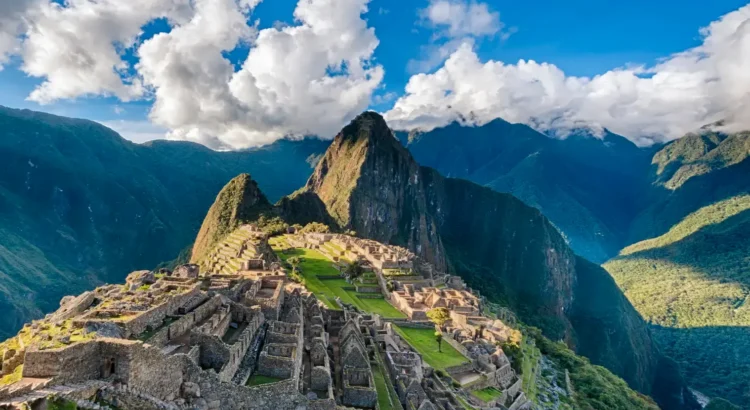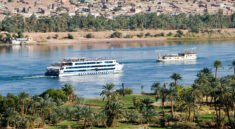
The Andes are not merely mountains—they are monuments of time, mystery, and cultural resilience. Stretching across seven countries in South America, they cradle one of the world’s most captivating ancient civilizations: the Inca Empire. To journey through the Inca Trails and the Andean Highlands is to embark on a path of discovery, not just through landscapes of staggering beauty, but through the layered history of a people who shaped the land and were shaped by it.
From the time-worn stone steps of Machu Picchu to the vibrant markets of Cusco, from high-altitude lagoons to whispering cloud forests, this is a world where the past speaks in stone and spirit. Prepare yourself for a profound encounter with nature, culture, and history, where every step is a dialogue with the sacred.
The Legacy of the Inca Empire
The Inca Empire, known as Tawantinsuyu, once stretched over 2,500 miles—from modern-day Colombia down to Chile—yet its heartland lay in the Andean highlands of Peru. The Incas were master builders, astronomers, and farmers. They constructed a vast network of trails known as the Qhapaq Ñan, or “Royal Road,” which connected distant corners of the empire through precipitous mountain passes, lush valleys, and arid plateaus.
The most famous section of this system is the Inca Trail to Machu Picchu, but it’s just one piece of an elaborate puzzle. The true wonder of these trails lies not just in where they lead—but in what they teach. They reveal the ingenuity of a civilization that tamed the mountains, honored the cosmos, and left behind an architectural legacy that still stuns the modern mind.
The Inca Trail: A Sacred Pilgrimage
Trekking the Inca Trail is more than a hike—it is a spiritual pilgrimage, a test of endurance, and an immersive history lesson. The classic route spans roughly 26 miles (42 kilometers) and typically takes four days, winding through high passes and cloud forests, past Inca ruins, terraces, and tunnels carved into rock centuries ago.
Day 1: Into the Sacred Valley
Your journey often begins in Cusco, the ancient capital of the Inca Empire. From there, you descend into the Sacred Valley, where the river sparkles with glacial melt and ancient villages like Ollantaytambo welcome travelers with cobblestone streets and archaeological wonders.
After crossing the Urubamba River, the trail begins gently. You walk alongside llamas grazing on the slopes and pass locals carrying bundles wrapped in traditional textiles. The air smells of eucalyptus and earth. The excitement builds with each step toward the Andes’ higher realms.
Day 2: Conquering Dead Woman’s Pass
The second day is often considered the most challenging but also the most rewarding. You ascend to Warmiwañusqa, or Dead Woman’s Pass, the highest point on the trail at 4,215 meters (13,828 feet). The air thins, the landscape changes, and a quiet reverence settles in.
Reaching the pass, trekkers often pause to reflect—not just on the physical feat but on the thousands of feet that walked before. From here, the mountains open like ancient guardians, their shadows stretching into valleys below. It’s not uncommon to feel tears, laughter, or a mix of both.
Day 3: Incan Architecture and Jungle Magic
The third day introduces you to some of the most impressive Inca ruins, including Runkurakay, Sayacmarca, and Phuyupatamarca. These rest stops were once tampu—places for messengers and nobility to rest, trade, and honor the gods. Each stone was laid with such precision that not even a knife blade fits between them.
As you descend into cloud forest, the terrain turns lush. Orchids bloom, birds flit between vines, and mist rises from the canopy like incense. The trail becomes quieter, dreamlike, as if nature is whispering you toward something sacred.
Day 4: The Sun Gate and Machu Picchu
Before dawn on the fourth day, you reach the final climb to Inti Punku, the Sun Gate, where the sun’s rays first strike Machu Picchu. The moment is indescribable. There it is—the Lost City of the Incas, perched in majesty, wrapped in mist, kissed by morning light. You’ve walked into a page of history.
Machu Picchu: City in the Clouds
Machu Picchu defies description. Set between Huayna Picchu and Machu Picchu Mountain, this 15th-century citadel was likely a royal estate or sacred ceremonial site. The precise function remains a mystery, but its power is undeniable.
Every element—from the Temple of the Sun to the Intihuatana stone (a ritual sundial)—reflects astronomical knowledge and spiritual alignment. The way light falls during solstices, the water channels carved through stone, and the terraces that embrace the mountain like open arms all speak of a people deeply connected to the earth and sky.
Whether you arrive via the Inca Trail or by train, Machu Picchu is transformative. It is not just a ruin—it is a resurrection of awe.
The Andean Highlands: Where Earth Touches Sky
The Andean Highlands offer more than Machu Picchu. They are a living, breathing cultural landscape where indigenous communities, vibrant markets, and awe-inspiring nature invite deeper exploration.
Cusco: Navel of the Inca World
Cusco, once the capital of the Inca Empire, is a city that balances heritage and hospitality. Its narrow lanes reveal Inca walls topped by Spanish colonial buildings, and its plazas pulse with life. Visit Qorikancha, the golden temple once dedicated to the Sun God, and now absorbed into the Santo Domingo Church.
Local women in bright polleras (skirts) and bowler hats sell handwoven textiles. Children chase each other near centuries-old fountains. Festivals like Inti Raymi bring the streets alive with dances, songs, and processions that echo pre-Columbian rites.
The Sacred Valley: Agriculture and Spirituality
The Sacred Valley is not just fertile—it’s sacred. Towns like Pisac and Chinchero boast vibrant markets, pre-Inca ruins, and workshops where traditional weaving techniques endure. You can watch alpaca wool being dyed with cochineal or indigo, then spun into intricate shawls and ponchos.
In Moray, concentric agricultural terraces resemble a green amphitheater—possibly used for crop experimentation by the Incas. Nearby, the Maras salt mines glisten white against the hills, harvested the same way for centuries.
Lake Titicaca: Birthplace of the Sun
To the south lies Lake Titicaca, the world’s highest navigable lake and considered by the Incas to be the birthplace of the sun. Its waters are a shimmering mirror to the sky, and its islands are home to the Uros, who live on floating reed islands, and the Quechua-speaking communities of Taquile and Amantaní.
Here, time slows. You’ll sleep in adobe homes, eat trout from the lake, and learn dances that honor the cycles of nature. The sense of place is profound—as if you are not merely visiting, but returning to something ancient within yourself.
People of the Andes: Guardians of Tradition
The most enduring legacy of the Andes isn’t the architecture—it’s the people. The Quechua and Aymara cultures have survived conquest, colonization, and modernity with incredible grace.
In highland villages, hospitality is sacred. You may be offered mate de coca to help with altitude or invited to share a meal of quinoa soup and roasted cuy (guinea pig). Music fills the air—panpipes, charangos, and Andean flutes echo through valleys.
Rituals like the pago a la tierra (payment to the earth) are still practiced, where coca leaves and chicha are offered to Pachamama, the Earth Mother. These traditions reflect a worldview where humans are part of, not above, the natural world.
The Call of the Condor: Symbol of the Andes
One cannot speak of the Andean Highlands without invoking the condor—the great bird that flies between worlds. In Andean cosmology, the condor represents the Hanan Pacha, the upper world of the gods.
To witness a condor gliding over the Colca Canyon or high above the Sacred Valley is to glimpse the sacred. It reminds you that this journey is more than physical—it’s spiritual. You are walking ancient paths, breathing rare air, and touching a culture that still soars.
Conclusion: Walking With the Ancients
The Inca Trails and Andean Highlands are more than destinations. They are a living classroom, a spiritual retreat, and a celebration of endurance—of both nature and humanity. To walk these trails is to walk with the ancients, to listen to stones that still speak, and to find yourself in the process.
This is not a journey of escape—it is a journey of return. Return to the mountains, to the stories, and to the soul.




